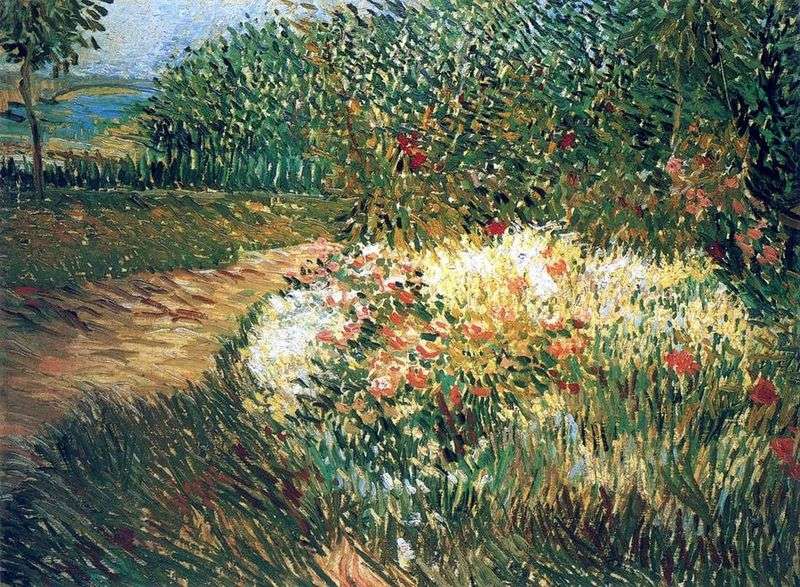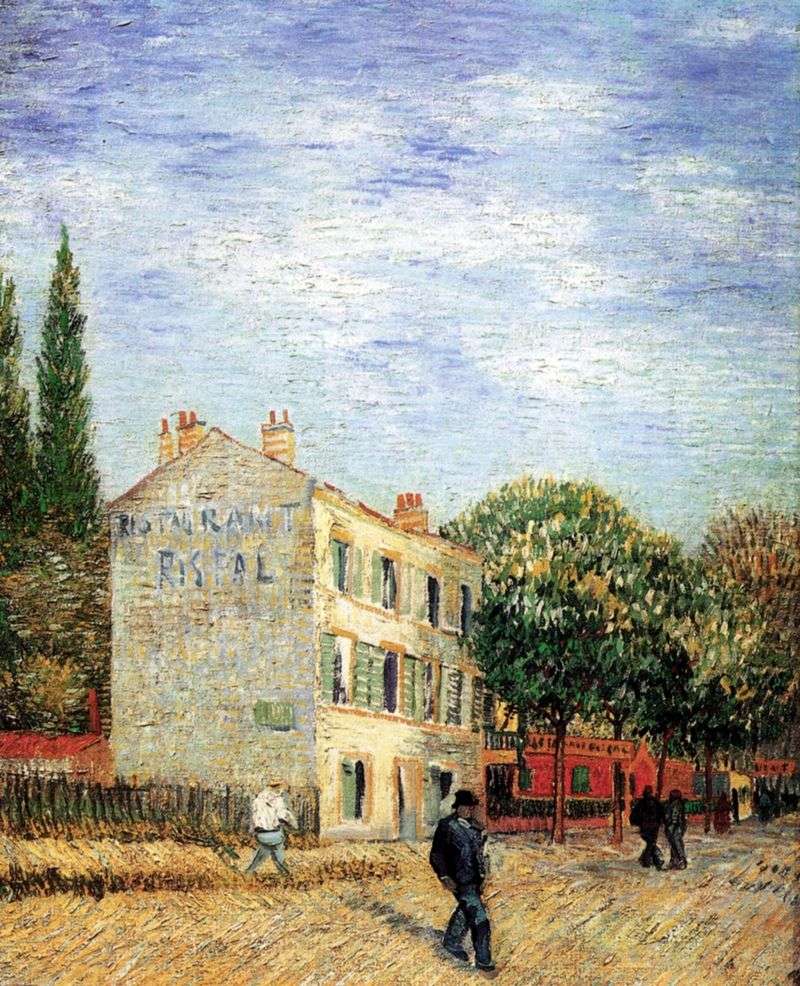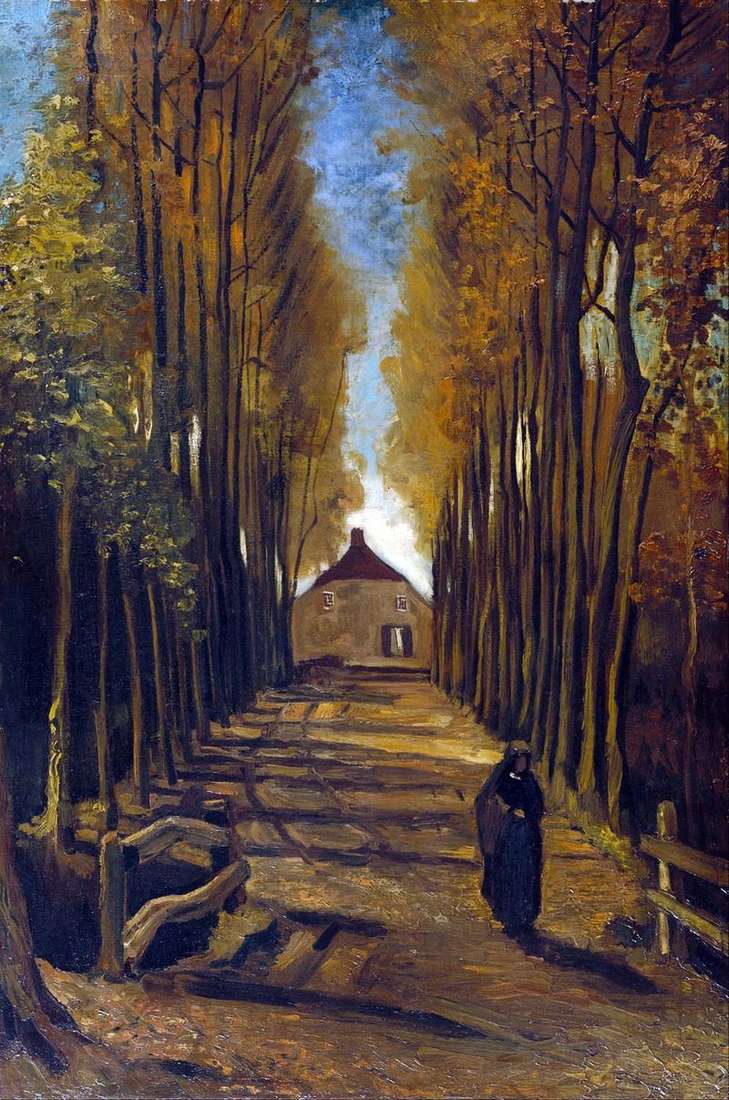
In 1887, Van Gogh often painted landscapes from nature, trying to find and convey the freshness of natural shades, the subtleties of open-air lighting. Nature was for him inextricably linked with the world of human feelings, and often in the landscape images embodied their own experiences of the artist.
In this picture, Van Gogh depicted the dark avenue of the park against the backdrop of the twilight sky. The sun had already set, painting the sky in a dark yellow color. Its reflections are visible on the path, where yellowish shades are interspersed in the cold color of the earth. Dark silhouettes of trees rise against the background of the sky, as if saying goodbye to the passing day.
Van Gogh makes the dark twilight landscape quite bright, maximizing the subtle color nuances of natural shades. The smooth rhythms of the composition create an atmosphere of rest, but multidirectional quick strokes bring a touch of alarming dynamism, making the road surface uneven and causing the dark leaves of trees to crumble.
Perhaps this speed of execution was caused by the artist’s desire to capture the evening motif as soon as possible on the canvas, to “catch” the outgoing colors of the still bright sky. In any case, the author was able to fully transfer his own experiences through the state of nature.
 Park in Asnieres in spring by Vincent Van Gogh
Park in Asnieres in spring by Vincent Van Gogh The corner of the park d’Argenson in Asnieres by Vincent Van Gogh
The corner of the park d’Argenson in Asnieres by Vincent Van Gogh Couples in the Park d’Argenson in Asnieres by Vincent Van Gogh
Couples in the Park d’Argenson in Asnieres by Vincent Van Gogh Restaurant Rispal in Anjera by Vincent Van Gogh
Restaurant Rispal in Anjera by Vincent Van Gogh Bridge over the Seine in Asnieres by Vincent Van Gogh
Bridge over the Seine in Asnieres by Vincent Van Gogh The Plane Alley by Vincent Van Gogh
The Plane Alley by Vincent Van Gogh View of the river with fun boats by Vincent Van Gogh
View of the river with fun boats by Vincent Van Gogh Poplar Alley in Autumn by Vincent Van Gogh
Poplar Alley in Autumn by Vincent Van Gogh